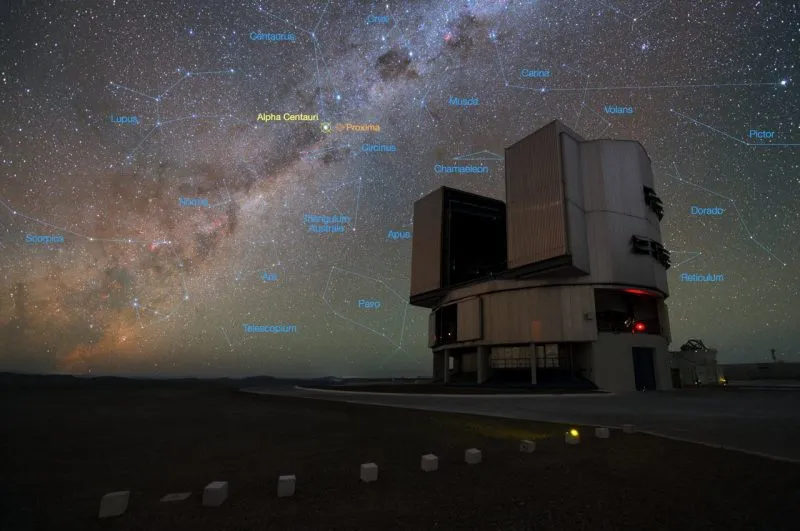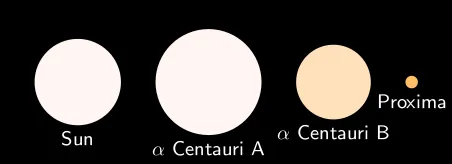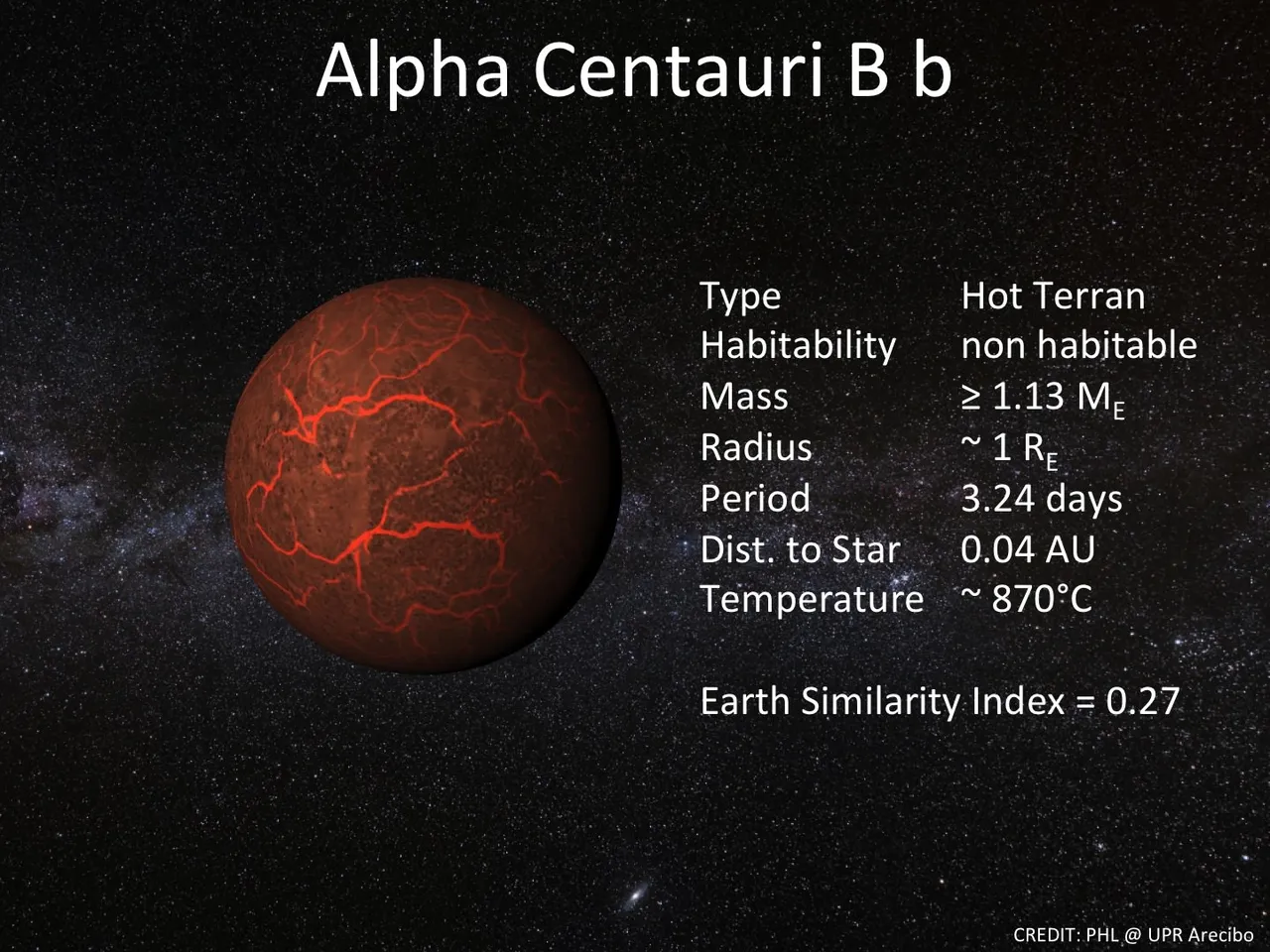The Alpha Centauri system consists of three stars. The two main components are Alpha Centauri A and Alpha Centauri B. The third star, a red dwarf called Proxima Centauri I wrote in the last article

Alpha Centauri A’s surface temperature is a few degrees Kelvin less than our sun (that is, about 5770 k), but its greater diameter (about 25% more than the sun) and the overall larger surface area gives it a luminosity nearly 1.6 times that of our star.
The smaller member of the system – orangish Alpha Centauri B – is slightly smaller than our sun, with a spectral type of K2. With lower temperature (about 5,300 K) and only half the luminosity of the sun
These two stars orbit a common center of gravity once every 80 years. The orbit is elliptical (non-circular), with distance between the two stars of about 11 Astronomical Units - 35 Astronomical Units

Astronomers detected the alien planet around the sunlike star Alpha Centauri B. The newfound world is about as massive as Earth, but it's no Earth twin; its heat-blasted surface may be covered with molten rock, researchers said.
The mere existence of the planet, known as Alpha Centauri Bb, suggests that undiscovered worlds may lurk farther away from its star — perhaps in the habitable zone, that just-right range of distances where liquid water can exist.
